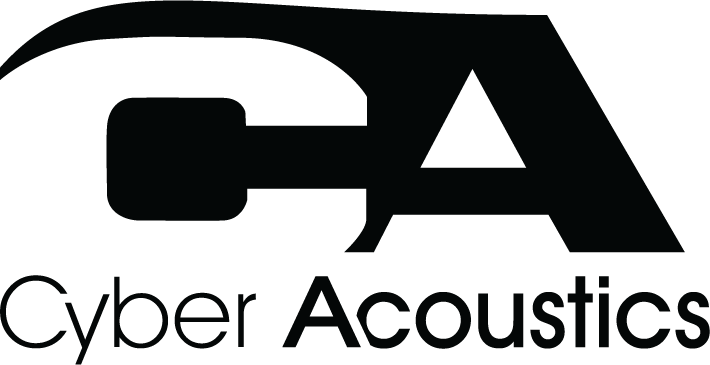Can Online Tutorial Sites Help Struggling Students?
Friday, June 30, 2017 by Cyber Acoustics
It’s summertime, which for kids means hanging out with friends, going on family vacations, and lots of video games. Basically, in a kid's world, the term “summer slide” likely refers to their favorite playground activity. But for parents, the summer slide has a completely different meaning -- where having a couple months off from school means their kids may forget what they learned in the just-completed school year and, in turn, end up falling behind at the start of the next year.
For years, parents have tried to keep learning going during the summer, much to their children's chagrin. Flash cards and workbooks have been popular tools for decades, and recently online tutorial websites have grown in popularity.
But which online resources are the best? And more importantly … do they work? Can they really help year-round? Can struggling students supplement their studies with these sites and see an improvement?
Which sites should students use?
Khan Academy: This is the most popular site by far. First and foremost, it’s free. But beyond having the right price attached to it, the site itself is incredibly comprehensive while being easy to use. Khan Academy caters to every grade level with just about every subject. The assignments are broken into 5-6 questions each so as to not be overwhelming. They offer video hints if a student gets stuck, and points are assigned at the end of each session. The points provide a gamification system, giving kids rewards and opening new levels as if playing a video game.
The site was founded in 2006 by Salman Khan, an American educator. The popularity of the site is staggering with more than three million subscribers on YouTube, and their videos have been viewed over a billion times. In 2012, Time Magazine included Khan on its list of the 100 Most Influential People in the world.
While Khan Academy is the leader in the field, they’re by no means the only one. Other options include…
PatrickJMT: For students who need extra help in math, this site has just about everything. It ranges from basic concepts all the way through calculus and advanced topics (for example: Using Gauss-Jordan to Solve a System of Three Linear). The site consists of instructional YouTube videos, but there are no worksheets or problems on the site itself, which may not appeal to students who learn by doing instead of just watching.
Arcademics: This site is geared toward elementary students and uses video games to help kids with math and language arts. Students can invite their friends to join them in a private game, or they can play games in a public room against other users -- although for safety reasons, there's no direct communication between players. Much of the site is free, and paid tiers open up ad-free content. Three percent of the site's proceeds go to the Boys & Girls Clubs of America, so an investment in a child's studies also goes to support a great cause.
Wyzant: While this site has some resources for elementary students, Wyzant is primarily focused on lessons for high school students. The site includes subjects ranging from algebra to accounting to science, and also includes a section on test preparation. It’s neatly organized and easy to navigate with step-by-step instructions for each of the various topics. Wyzant also includes helpful blogs and videos.
Of course, these sites are just a few of the endless resources available on the internet. There's an entire industry of online tutorial sites promising improved performance. Of course, that leads to the next question…
Do these sites work?
Online tutorial sites offer a number of advantages. For students in danger of falling behind in class, utilizing a site such as Khan Academy allows them to move at their own pace on their own time. This independent, online study allows students to focus without worrying about what the 25 other kids in class around them are doing. And on the flip side, students that accel and seek challenges can work ahead as needed and be that much more prepared for advanced studies.
Of course, there is an impetus on parents to be involved in their child’s use of online tutorials. It’s not enough to turn a student loose on one of these sites and assume that their understanding of the subject will magically improve by a dramatic margin. In the classroom, if a student isn’t understanding a problem, they can raise their hand and get direct assistance from a teacher who will likely know what type of learning works best for that student. But if a child is tucked away in their room with a laptop, a subject that confuses them might not be solved by a website.
This can be particularly tricky with high school students. Parents involved in online tutorials with their elementary-aged kids can likely walk them through most problems. But a lot of parents may not be well versed in quadratic algebraic equations. Additionally, with few exceptions, students working on tutorial sites lose the collaborative effort of working with their peers through particularly troublesome questions.
So what’s the answer? Well, it’s important to remember that different students thrive in different learning environments, and there isn’t a one-size-fits-all answer. But there are marked benefits in working with online tutorial sites, so much so that many teachers recommend it during time away from school. The best approach for many students is for classroom learning and online tutorials to work hand-in-hand with each other to produce the understanding and knowledge needed to thrive.
At Cyber Acoustics, our industry-proven products can assist the learning process and help students push past their boundaries to reach new heights. Check out our product catalogs, and request a product sample today.


